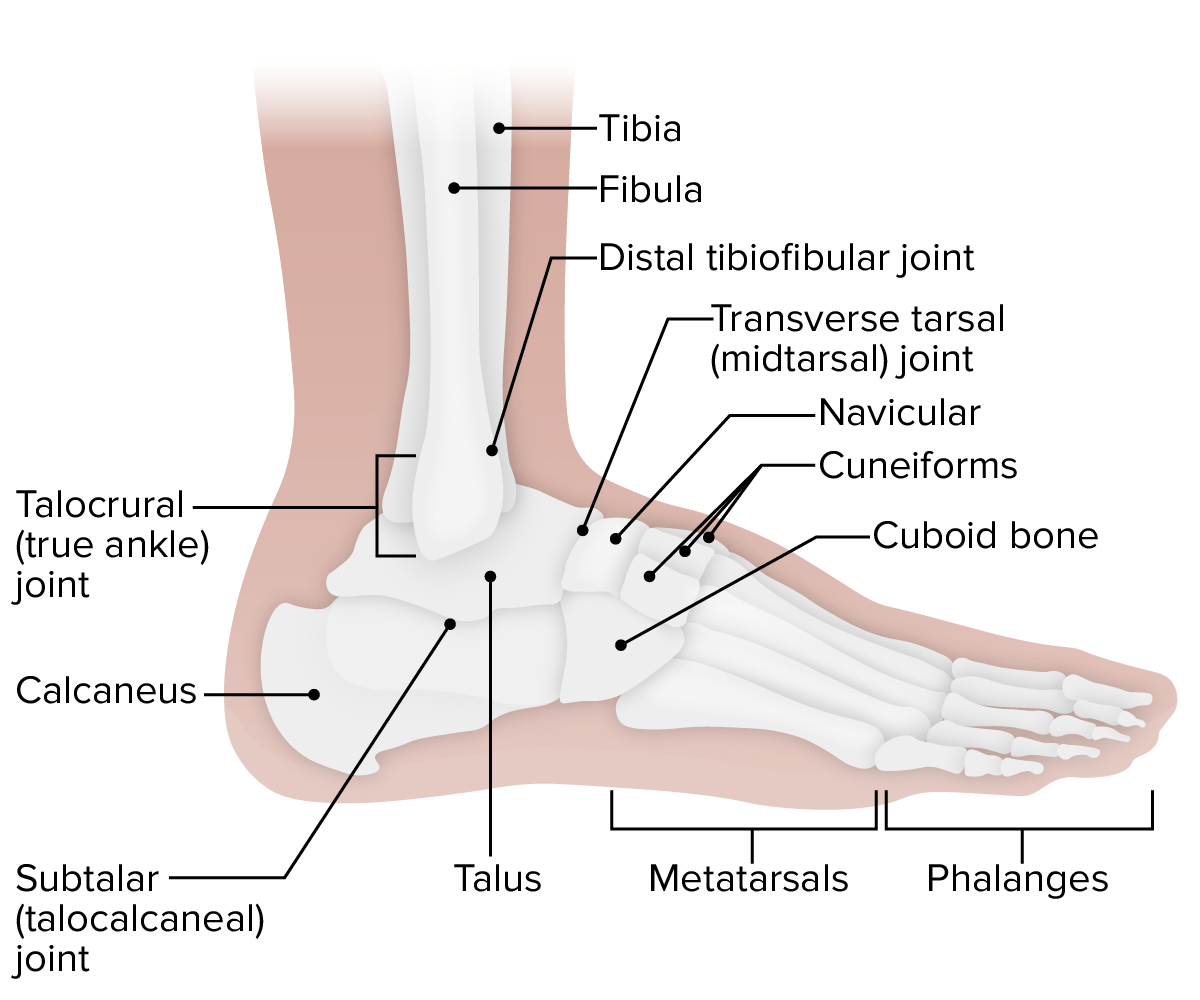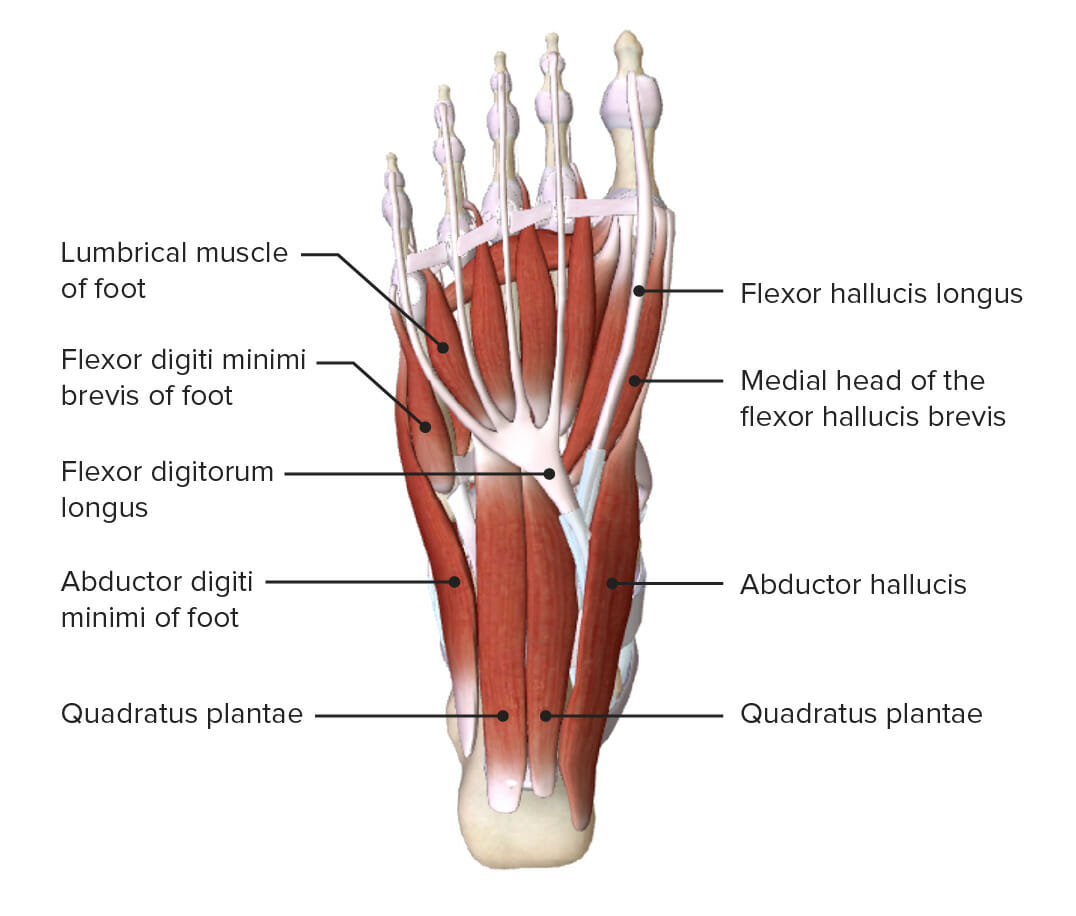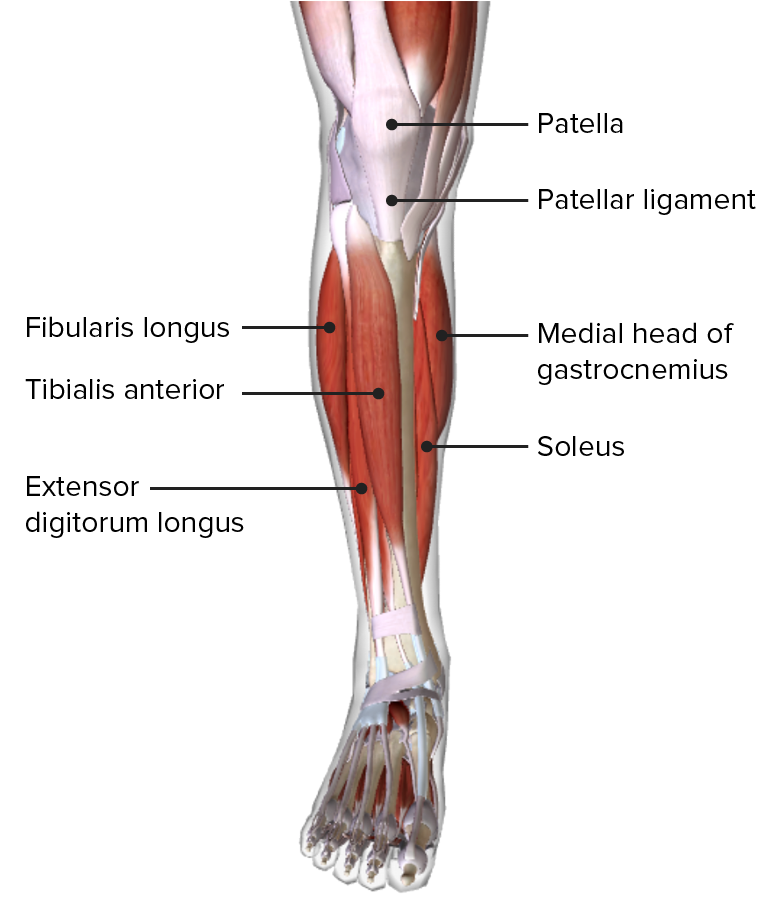Playlist
Show Playlist
Hide Playlist
Tibiofibular Joint – Joints of Lower Limb
-
Slides 09 LowerLimbAnatomy Pickering.pdf
-
Download Lecture Overview
00:01 posterior cruciate ligament, and also the medial femoral condyle. Now let’s move on to the tibiofibular joint. So here we have the tibiofibular joint superiorly. We have it here between the head of the fibula and the tibia. And we also have a more distal tibiofibular joint between the distal ends of the tibia and the fibula, which we can see here. And this distal tibiofibular joint is important with the articulation of the talus to form the ankle joint. So the tibia and the fibula are connected via two joints, the superior and inferior tibiofibular joints. There’s also an interosseous membrane which we can see here, and that is connecting the two bones. Here, we can see the superior aperture for the anterior tibial artery. All the connecting ligaments and fibres of the interosseous membrane run inferiorly from the fibia, and this resists the downward pull of the fibula. So all the connecting ligaments and fibres of the interosseous membrane run inferiorly down from the tibia, and this serves to resist the downward pull of the fibula. The inferior tibiofibular joint is a fibrous joint. It’s essential for the stability of the ankle joint. Distally, we have a strong interosseous tibiofibular ligament. So here we can see a strong tibiofibular ligament. 01:29 We have this anterior and posterior. The joint is reinforced by these anterior and posterior tibiofibular ligaments. So here we can see, as we go to the ankle joint, this anterior
About the Lecture
The lecture Tibiofibular Joint – Joints of Lower Limb by James Pickering, PhD is from the course Lower Limb Anatomy [Archive].
Included Quiz Questions
Which type of movement do connecting ligaments between the tibia and fibula resist?
- The downward pull of the fibula.
- The upward pull of the fibula.
- The anterior pull of the fibula.
- The posterior pull of the fibula.
- The lateral pull of the fibula.
Customer reviews
5,0 of 5 stars
| 5 Stars |
|
5 |
| 4 Stars |
|
0 |
| 3 Stars |
|
0 |
| 2 Stars |
|
0 |
| 1 Star |
|
0 |






